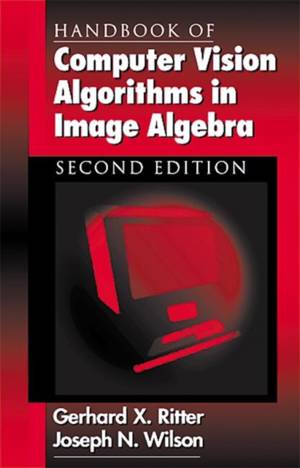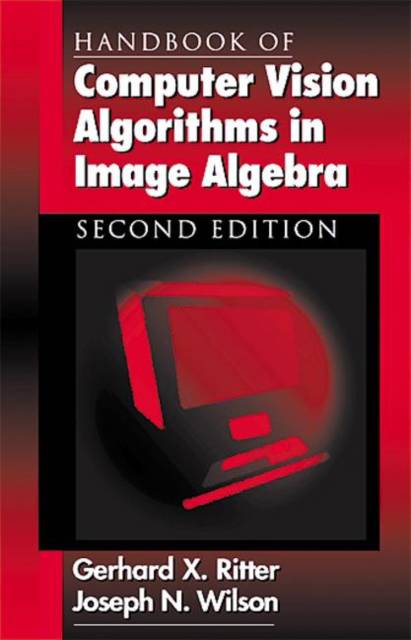
Door een staking bij bpost kan je online bestelling op dit moment iets langer onderweg zijn dan voorzien. Dringend iets nodig? Onze winkels ontvangen jou met open armen!
- Afhalen na 1 uur in een winkel met voorraad
- Gratis thuislevering in België vanaf € 30
- Ruim aanbod met 7 miljoen producten
Door een staking bij bpost kan je online bestelling op dit moment iets langer onderweg zijn dan voorzien. Dringend iets nodig? Onze winkels ontvangen jou met open armen!
- Afhalen na 1 uur in een winkel met voorraad
- Gratis thuislevering in België vanaf € 30
- Ruim aanbod met 7 miljoen producten
Zoeken
Handbook of Computer Vision Algorithms in Image Algebra
Joseph N Wilson, Gerhard X Ritter
Hardcover | Engels
€ 427,45
+ 854 punten
Omschrijving
Image algebra is a comprehensive, unifying theory of image transformations, image analysis, and image understanding. In 1996, the bestselling first edition of the Handbook of Computer Vision Algorithms in Image Algebra introduced engineers, scientists, and students to this powerful tool, its basic concepts, and its use in the concise representation of computer vision algorithms. Updated to reflect recent developments and advances, the second edition continues to provide an outstanding introduction to image algebra. It describes more than 80 fundamental computer vision techniques and introduces the portable iaC++ library, which supports image algebra programming in the C++ language. Revisions to the first edition include a new chapter on geometric manipulation and spatial transformation, several additional algorithms, and the addition of exercises to each chapter. The authors-both instrumental in the groundbreaking development of image algebra-introduce each technique with a brief discussion of its purpose and methodology, then provide its precise mathematical formulation. In addition to furnishing the simple yet powerful utility of image algebra, the Handbook of Computer Vision Algorithms in Image Algebra supplies the core of knowledge all computer vision practitioners need. It offers a more practical, less esoteric presentation than those found in research publications that will soon earn it a prime location on your reference shelf.
Specificaties
Betrokkenen
- Auteur(s):
- Uitgeverij:
Inhoud
- Aantal bladzijden:
- 444
- Taal:
- Engels
Eigenschappen
- Productcode (EAN):
- 9780849300752
- Verschijningsdatum:
- 21/09/2000
- Uitvoering:
- Hardcover
- Formaat:
- Genaaid
- Afmetingen:
- 179 mm x 265 mm
- Gewicht:
- 975 g

Alleen bij Standaard Boekhandel
+ 854 punten op je klantenkaart van Standaard Boekhandel
Beoordelingen
We publiceren alleen reviews die voldoen aan de voorwaarden voor reviews. Bekijk onze voorwaarden voor reviews.











